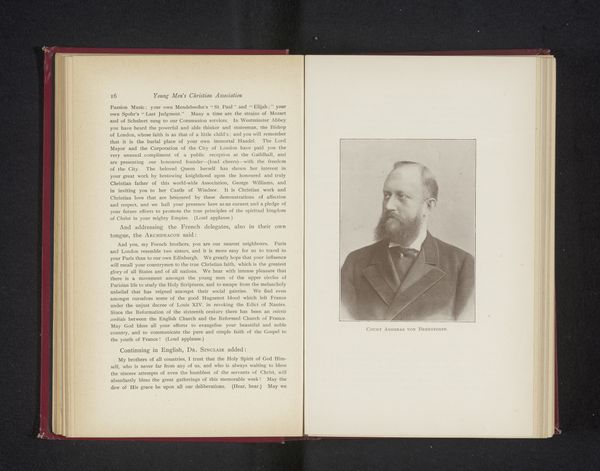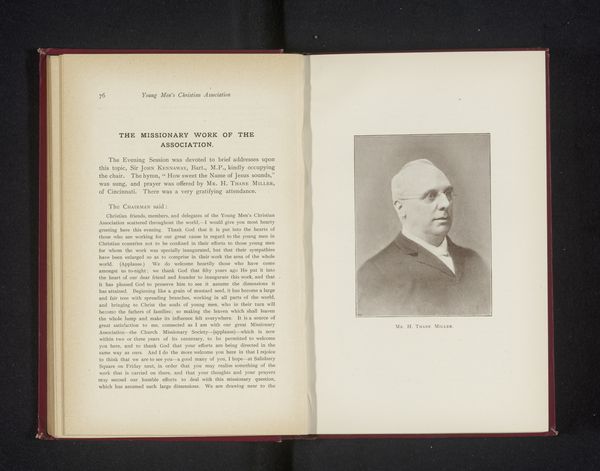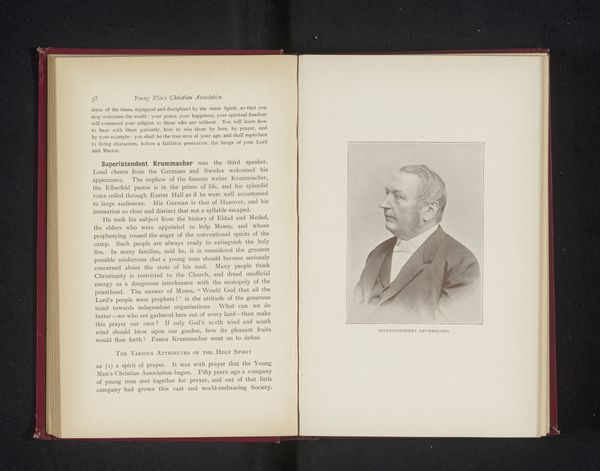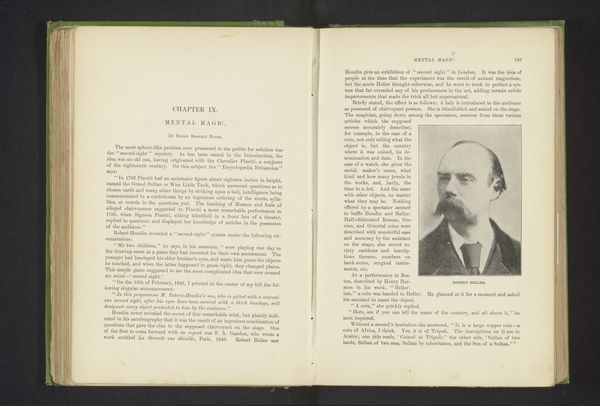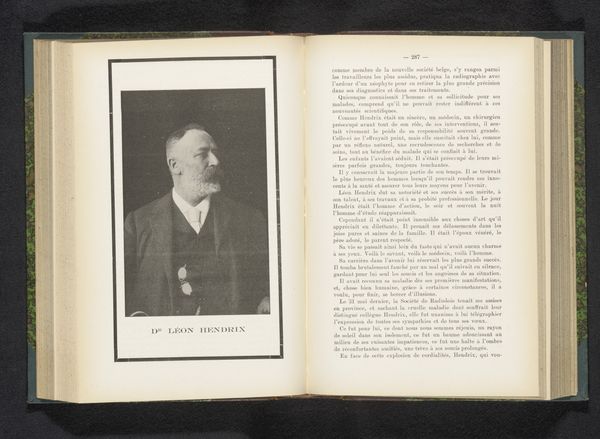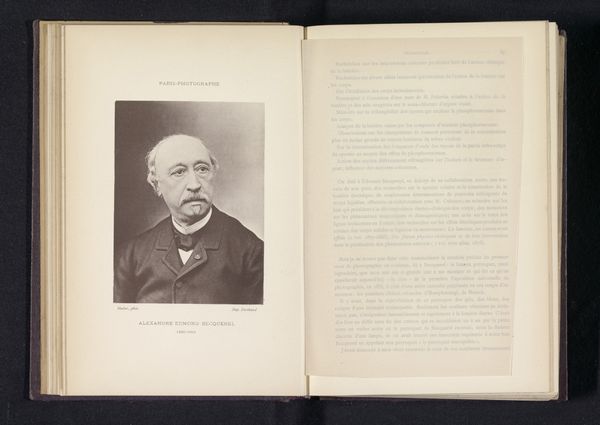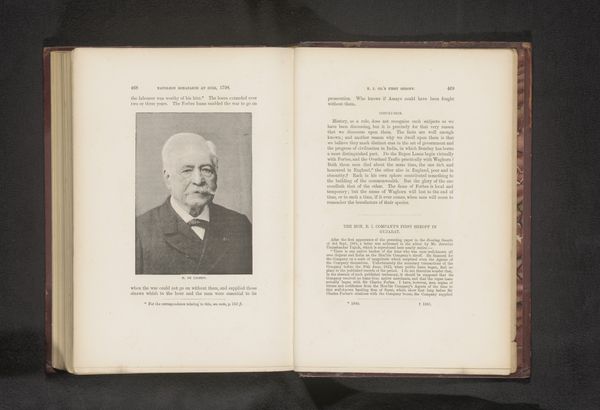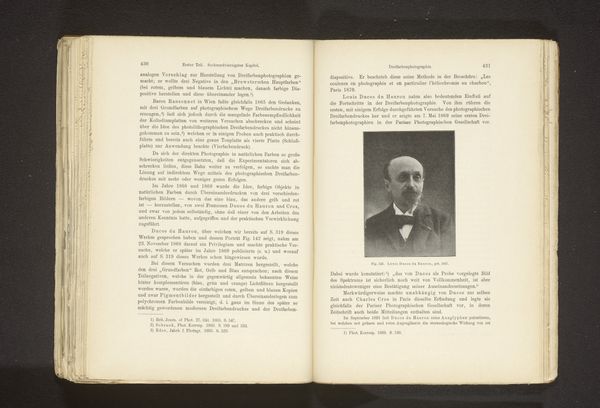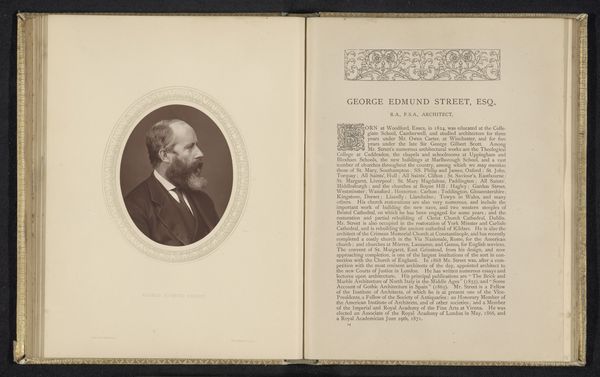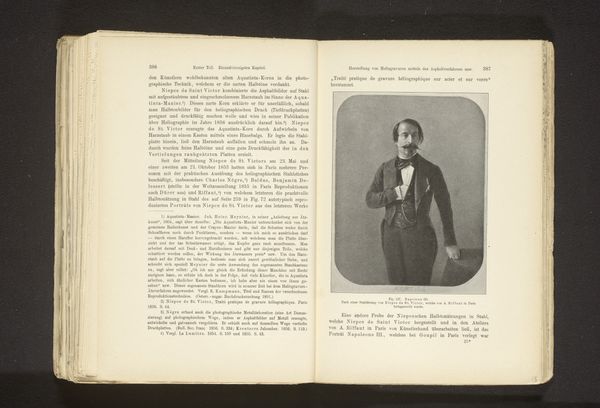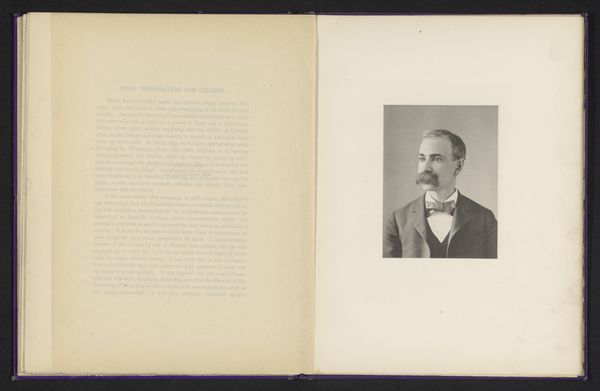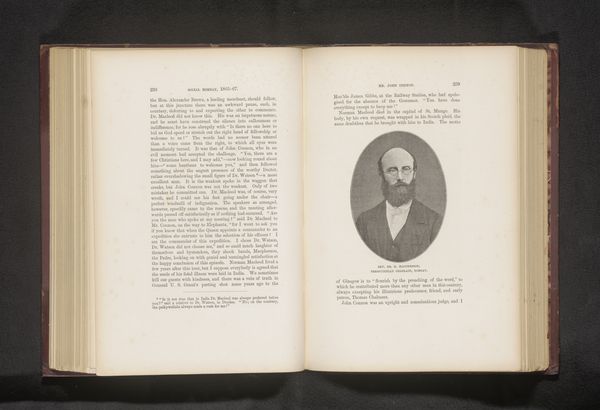
print, photography, collotype
#
portrait
# print
#
photography
#
collotype
#
genre-painting
Dimensions: height 101 mm, width 76 mm
Copyright: Rijks Museum: Open Domain
Curator: We are looking at a collotype print entitled “Portret van W.H. Mills,” by Thomas Fall, made before 1895. It appears to be a portrait of a distinguished-looking gentleman included in a commemorative book of some kind. Editor: The man’s confident gaze strikes me. There’s a formality, of course, given the context, but I sense a kind of determination behind those eyes. Curator: The collotype process allowed for a remarkable tonal range and the capture of photographic detail for print reproduction on a mass scale. This particular portrait, presumably commissioned, served a specific purpose within the narrative of the book, acting as a marker of status. Who was Mr. Mills and why include his picture? Editor: Well, the association in the left of the book is the "Young Men's Christian Association." Judging from the writing, I am thinking that W. H. Mills probably played a significant role in the YMCA's mission and outreach at that time, contributing maybe to philanthropy or other activities. A portrait within this Jubilee statement speaks to the values and people the organization sought to uphold. The visual representation becomes a political statement of sorts. Curator: Exactly. His inclusion serves to legitimize and further promote the ideologies of the YMCA as it sought to broaden its societal and cultural footprint through publications that memorialized benefactors of the organization. The man becomes a symbol. Editor: But there’s also something unsettling about this sanitized portrayal. It neatly fits within the parameters of respectable society while possibly obscuring more complex truths. Was Mills a figure of unwavering virtue, or was this portrait crafted to serve the organization’s agenda? What impact would a person like him have in reinforcing Victorian norms that, even today, demand unpacking? Curator: Excellent points. By viewing it through a contemporary lens, we challenge the idealized narratives embedded within the print and the public role such representations played during that era, exposing potential contradictions and promoting dialogue. Editor: It leaves me reflecting on how photography has shaped identity. Thank you. Curator: And it speaks volumes about image as propaganda, how portraiture is enlisted to support power.
Comments
No comments
Be the first to comment and join the conversation on the ultimate creative platform.
